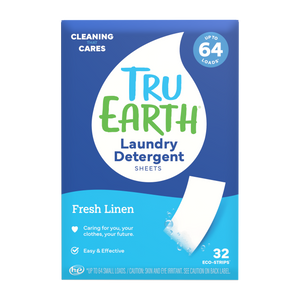Hand-washing clothes may seem like a lost skill when washing machines dominate modern conveniences. However, this traditional method offers numerous benefits, from preserving delicate fabrics to saving energy and water.
In this guide, we'll walk you through the step-by-step process of hand-washing clothes effectively. Whether dealing with delicate lingerie or rugged outdoor gear, these techniques will ensure your garments are cleaned carefully.

Why Hand Washing?
Hand washing clothes allows for greater control over cleaning, ensuring gentle treatment for delicate fabrics.
It's also an eco-friendly option, as it reduces water and energy consumption compared to machine washing. Additionally, hand washing extends the lifespan of clothing by minimizing wear and tear from the agitation of washing machines.
Choosing the Right Detergent
Selecting the appropriate detergent is key for successful hand washing. Opt for a gentle detergent formulated for hand washing or one specifically designed for delicate fabrics.
Avoid regular laundry detergent, which may contain harsh chemicals that can damage sensitive materials. For eco-conscious consumers, Tru Earth's laundry detergent strips offer a convenient and eco-friendly option.
Preparing Your Washing Area
Before beginning the hand washing process, set up a designated area equipped with a basin or sink, preferably with a plug, for easy draining.
Ensure the area is clean and free from any debris that could transfer onto your clothes. Gather all necessary supplies, including detergent, a soft-bristled brush for scrubbing, and a drying rack or clothesline.
Step-by-Step Hand Washing Process
Starting the process of hand washing clothes is an important skill that helps maintain garment quality and cleanliness. These simple yet effective techniques will guide you through each stage, ensuring your garments are cleaned with care and precision.
Step 1: Sorting
Separate your laundry into similar colors and fabric types to prevent color bleeding and damage. Sorting also helps to ensure that delicate fabrics receive gentle treatment during washing.
Step 2: Pre-Treatment
Inspect garments for stains and pre-treat them using a gentle stain remover or a dab of detergent. Pre-treating stains before washing increases the likelihood of successful removal and helps to prevent them from setting in.
Step 3: Fill the Basin
Fill the basin with lukewarm water and add the appropriate detergent according to the product's instructions. Correctly measuring the detergent ensures effective cleaning and prevents overuse, which can lead to residue buildup.
Step 4: Soaking
Submerge the clothes in soapy water and allow them to soak for 10-15 minutes to loosen dirt and stains. Soaking helps break down tough stains and dirt, making them easier to remove during washing.
Step 5: Agitation
Gently agitate the garments by swishing them in the water, paying extra attention to heavily soiled areas. Agitating the clothes helps to distribute the detergent evenly and ensures thorough cleaning.
Step 6: Scrubbing
For stubborn stains, use a soft-bristled brush to gently scrub the fabric, working from the outside of the stain towards the center. Scrubbing helps to lift dirt and stains from the fabric fibers, increasing the effectiveness of the cleaning process.
Step 7: Rinsing
Drain the soapy water and refill the basin with clean water. Rinse the clothes thoroughly until all traces of detergent are removed. Proper rinsing helps to prevent detergent residue from remaining on the fabric, which can cause skin irritation.
Step 8: Drying
Squeeze out excess water from the garments and lay them flat on a clean towel to air dry or hang them on a drying rack or clothesline. Proper drying methods help to preserve the shape and integrity of the clothing while ensuring thorough drying.
Tips for Specific Fabrics
We’ll focus on helpful tips for washing specific fabrics, ensuring your clothes look and feel their best wash after wash. Whether you're dealing with delicate silks or rugged outdoor gear, these tips will help you confidently tackle laundry day.
Delicates
When washing delicate fabrics, use a mild detergent like Tru Earth’s detergent strips. This will help preserve the fabric's integrity. It's also essential to avoid wringing or twisting delicate garments, as this can cause stretching or damage to the fabric fibers.

Wool
When washing wool garments, use cool water to prevent shrinking and maintain the wool's natural properties.
After washing, gently press out excess water from the garment without wringing it, which can distort its shape. Reshaping the wool garments while damp helps them retain their original form, and laying them flat to dry further protects their delicate fibers.
Outdoor Gear
Always follow the manufacturer's instructions for outdoor clothing and equipment to ensure proper care and maintenance. Avoid fabric softeners, as they can compromise the waterproofing properties of outdoor gear, reducing its effectiveness.
Adhere to the manufacturer's guidelines to prolong the lifespan of your outdoor gear and ensure optimal performance during outdoor activities.
Final Thoughts on Hand-Washing Clothes
Learning to effectively hand-wash clothes is a valuable skill that ensures your garments receive the care and attention they deserve.
By following these detailed instructions and tips, you can achieve clean, fresh-smelling laundry while preserving the integrity of your clothing. So, roll up your sleeves and start cleaning clothes the old-fashioned way!

